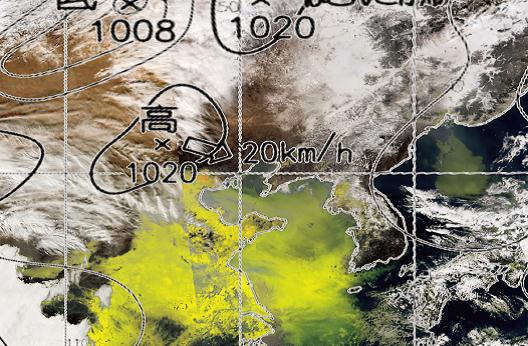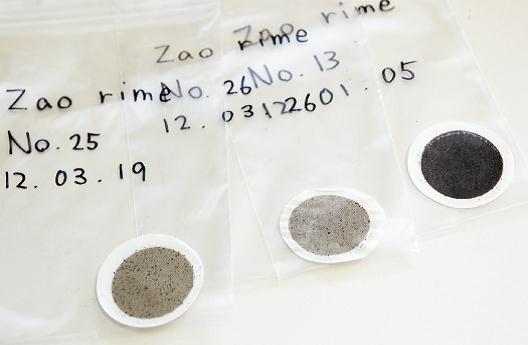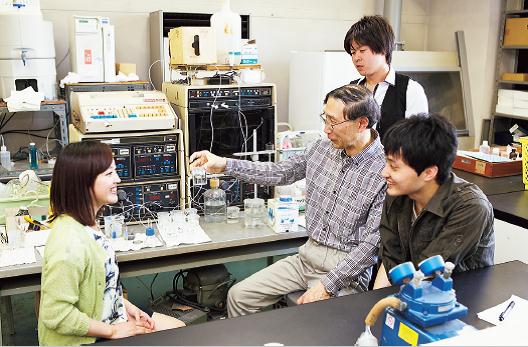







Home > Research > Research Overview > 2015 > Faculty of Science
Fumitaka Yanagisawa
Professor
Department of Earth and Environmental Sciences
Faculty of Science

▲Satellite visualization image based on MODIS data (January 4, 2015; yellow = air pollutants, white = clouds, brown = land, deep blue = seawater and green = vegetation; image courtesy of Professor Kudoh of Tohoku University); air pollutants that accumulated in the North China Plain can be seen moving toward Japan
In spring, a yellow haze covers the sky in Japan as the Aeolian dust (yellow sand) arrives from the continent. More recently, Japan is also seeing air pollutants like PM2.5 find its way across the Asian continent and over national borders to Japan. Stable isotope tracers (e.g. S, H, O, Sr and Nd) are being used to observe rainfall, aerosols and yellow sand in Asia to clarify the sources of these pollutants, the incoming paths and the reactions that take place during transport. Visualization of the air pollutants and yellow sand through satellite as well as cross-checks with observations from the ground are being carried out with Professor Jun-ichi Kudoh of Tohoku University. Air pollution forecasts are now becoming possible.

▲Ice monsters of Zao are melted and the sample is passed through a filter—the black substances on the filters shown are the cross-border air pollutants; the bucket that the professor is holding contains melted ice monster samples

▲A seminar on making specimens for the measurement of stable isotopes
The Juhyo "ice monsters" of Zao are made of ice and snow. While the primary origin of the ice and snow is the waters of the Sea of Japan, we now know that there are other sources of water involved. Meanwhile, on some days, the ice monsters turn a black color. It is becoming apparent that such "black" ice monsters are caused by cross-border pollutants. Furthermore, through the analysis of old materials like picture postcards, it was discovered that the distribution range of the ice monsters is shrinking due to global warming. The ice monsters can be thought of as a sensor that reacts sharply to changes in the global environment. We are continuously finding new materials and knowledge related to these ice monsters. I would like to write a new history of the ice monsters of Zao in the near future.